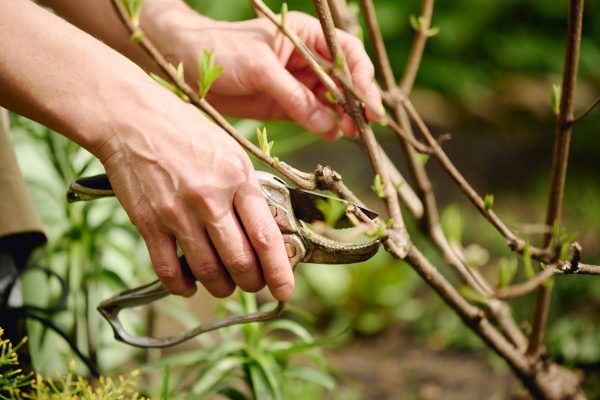Pruning Know-How
Pruning can be a lot of work, so why do we need to do it? Farmlands Technical Advisor Laurence Frost says there are five main reasons why we should regularly prune our plants.

Before you start lopping off branches, it’s important to understand the pruning needs of each individual tree. Laurence Frost says one crucial thing to know is whether your plant fruits on this year’s new growth – such as grapes and feijoas; or last year’s like boysenberries and blackberries. ‘Apples fruit on spurs, so they fruit on wood that grew last year. You have a nice new growth, it puts out a little spur, the flower comes off the spur, and then comes the fruit.’
For plants that fruit on new wood like feijoas, prune off the older growth where necessary, back to its frame. If your plant fruits on new growth, you need to focus on thinning it, removing branches to open it up for sunlight and pollination. ‘With citrus you just need to trim them back, but not so hard that you produce water shoots. Water shoots are the vertical growth that are generally not fruit bearers; it’s their laterals that then set flowers and ultimately fruit.’
Picking your tools
Laurence, a self-described ‘secateur snob’, says whatever tool you choose for your pruning, it needs to be sharp. ‘If it’s not sharp, you have the possibility of an injury to wrists, arms and elbows when trying to cut through branches.’
With cutting tools, gardeners need to be aware of the difference between bypass – for example scissors – and anvil pruners. Anvil pruners have a blade that cuts toward the flat surface that is the anvil. ‘The neat thing is an anvil takes about 40 per cent less energy to operate, which is great for older people. The advantage of a bypass is the blade is the closest thing to the cut. And as they say with shaving, nothing cuts as close as a blade.’
When to prune
So, when should you break out the pruning equipment and start grooming your plants? Laurence says early winter is your best bet for most plants. ‘Don’t sacrifice the fruit though, you can always prune after you have harvested.’
The job is not over once you have finished pruning. Laurence says you should use pruning paint on pruning wounds, especially those bigger than 1 cm. And most importantly make sure you get rid of the garden waste once you are done, especially diseased waste ‘as it could not only reinfect your plants, but also those in the neighbourhood’.
Why Prune?
Dead wood – removing this can help the remaining tree to thrive. It is also important for safety reasons, as dead branches are more likely to fall off during a storm, causing injury or damage.
Disease – trimming diseased branches can help to prevent disease spreading.
Crosses – Crossing branches can be problematic as this is where bugs such as wood lice live, meaning the branch will eventually snap or become unproductive.
Production – pruning opens the plant up for sunlight and pollination, boosting fruit growth.
Shape – trimming the tree to the right shape can not only assist with production, but make it look more attractive and prevent it from overwhelming nearby plants.
Laurence Frost is a Technical Advisor for Farmlands. As a formally qualified horticulturist, he is an enthusiastic propagator with a passion for nurturing knowledge in others and helping growers achieve their productivity goals, no matter how diverse their crop production. farmlands.co.nz
In partnership with Farmlands

